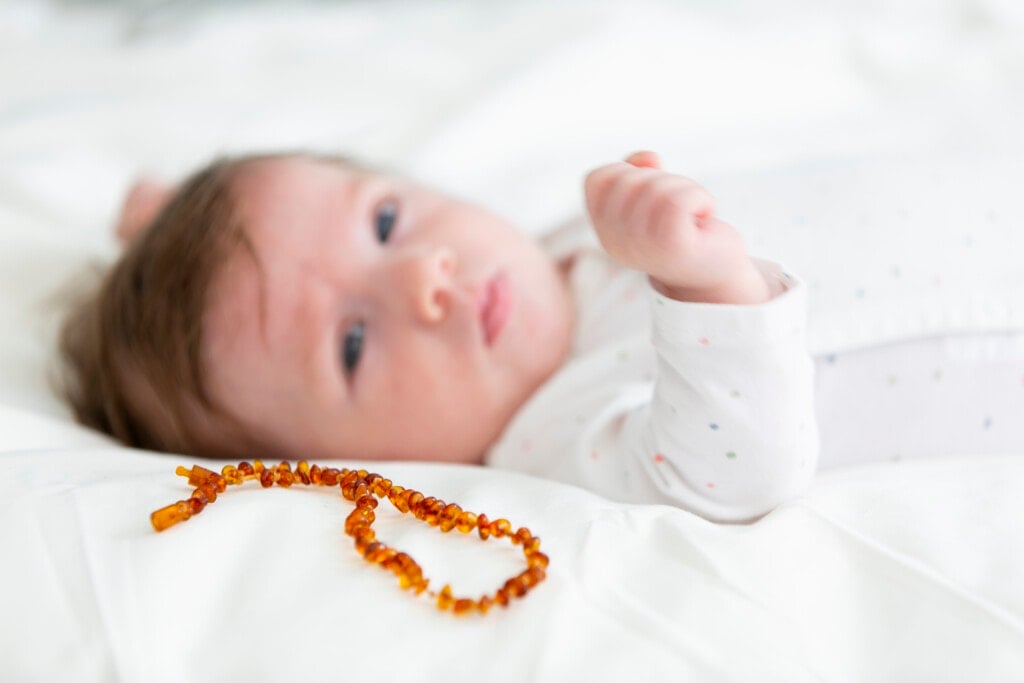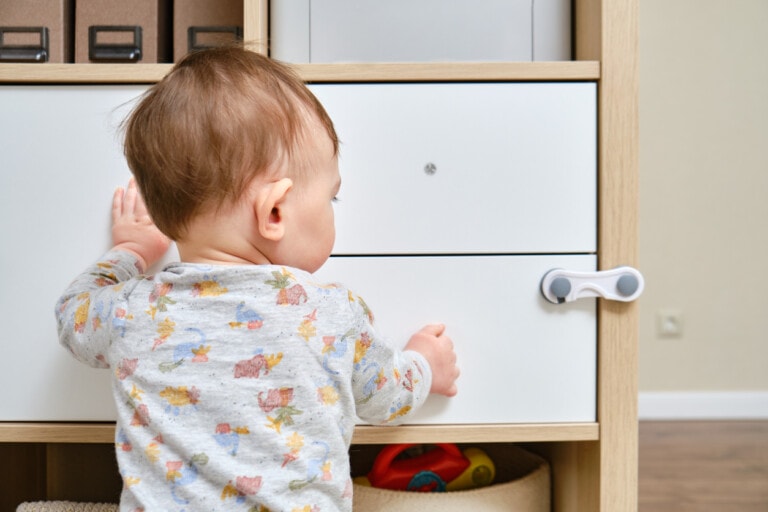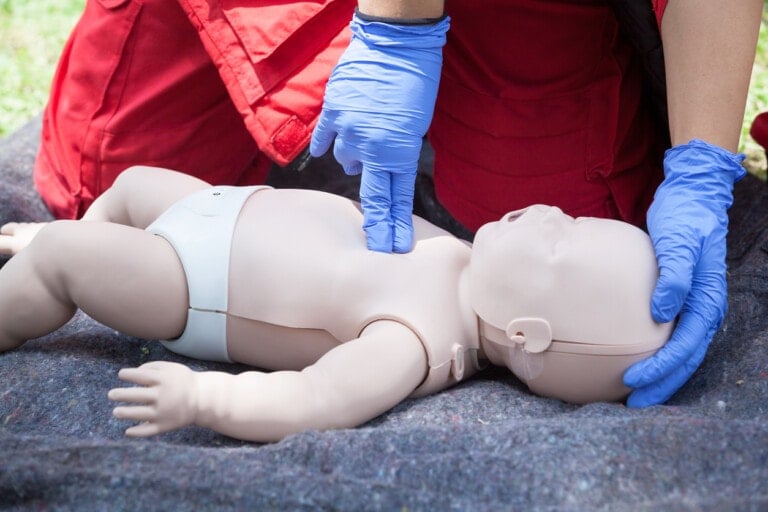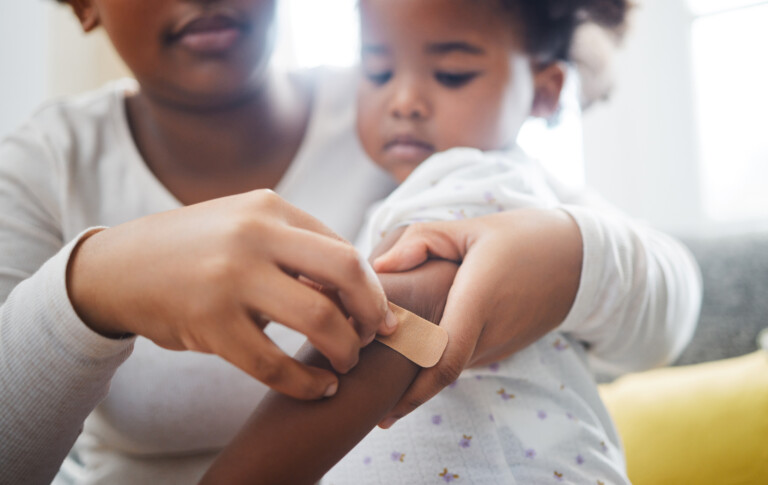Swollen gums, crankiness and crying, constant drooling, lack of sleep, and the urge to bite anything and everything. The teething chapter can be frustrating for parents and babies alike. Parents are understandably eager to immediately soothe their infant’s tender gums. They may find themselves turning to a variety of products to ease the pain. Some of these products include teething necklaces and bracelets.
For several years now, teething jewelry has been a popular choice among parents. Items like beaded anklets, bangles, or necklaces are made from various materials (amber, marble, silicone, or wood). Parents, and in some cases infants, can wear the jewelry and simultaneously gnaw on it.
Parents and caregivers are inundated with an overwhelming number of manufacturers marketing teething jewelry as their go-to aid. Whether they’re digitally shopping at Amazon, Etsy, or online boutiques or in-store viewing the stocked shelves of Target and buybuy Baby, teething bling is just about everywhere. But is it safe?
The FDA Advises Against Teething Jewelry
Many parents rely on this chic trend to relieve their little one’s pain or provide sensory stimulation for infants with special needs. However, the Food and Drug Administration (FDA) is now strongly advising against their use. In a 2018 statement released to the public, the FDA warned moms and dads of teething jewelry safety risks. They’ve stated that the jewelry can lead to the following detrimental hazards:1
- Choking: This can occur if the jewelry’s small beads break off and your infant swallows it, entering their throat/airway.
- Infection: The jewelry beads could also pierce a baby’s gums.
- Injury to the mouth: Necklaces, anklets, or bracelets can also irritate or stab a little one’s gums.
- Strangulation: This can occur if the teether gets wrapped around a baby’s neck or becomes caught on the crib.
“We’re concerned about the risks we’ve observed with these products and want parents to be aware that teething jewelry puts children, including those with special needs, at risk of serious injury and death,” said Scott Gottlieb, M.D., FDA Commissioner in the safety communication.
The FDA further warns of teething jewelry made from amber. They state it contains a substance known as succinic acid that can enter a baby’s bloodstream. The acid has been marketed as an anti-inflammatory aid that relieves teething and joint pain. However, the agency has not evaluated these claims to determine their safety or effectiveness.
The advisory came after the FDA received several reports, with one resulting in a fatality. An 18-month-old child was strangled by his amber teething necklace during a nap and passed. In a second case, a 7-month-old baby choked on the beads of a wooden teething bracelet while under parental supervision. Fortunately, the infant was taken to a hospital and survived the incident.
“Given the breadth of the market for these teething necklaces and jewelry, we’re sharing this important safety information directly to consumers to help prevent injuries in infants and kids,” Gottlieb added.
Additional FDA Teething Advisories
In recent years, the FDA has also released warnings against using over-the-counter (OTC) oral products.2 These topical teething creams, gels, ointments, and sprays contain benzocaine for baby’s mouth and gum pain. The local anesthetic is an active ingredient in several OTC products, such as Anbesol, Baby Orajel, Cepacol, Orabase, and Topex, to name a few.
Benzocaine and other local anesthetics can cause life-threatening and sometimes fatal illnesses. One such illness is methemoglobinemia, a serious condition in which the amount of oxygen carried through the blood is greatly reduced. The agency adds that parents who choose to continue to purchase benzocaine oral products should only use it for adults or children 2 years and older if the treatment contains methemoglobinemia warnings on the label.
Homeopathic teething tablets are dissolvable pellets placed under an infant’s tongue or mixed into milk or water to provide fast teething relief. These also made the FDA’s list of pain-relievers parents should immediately stop using.3 The FDA discovered that Hyland Inc.’s homeopathic teething products contained unusually high levels of a toxic substance called belladonna. The substance was not accurately labeled on the packaging.
Belladonna is a potentially deadly nightshade plant. It has been used in medical applications for centuries. But is also poisonous and should not be taken orally. The FDA stated that homeopathic teething tablets containing the plant “pose an unnecessary risk to infants and children.” Therefore, they urge “consumers not to use these products and dispose of any in their possession.”
Approved Teething Remedies
With a lengthy list of products to avoid, you may be wondering, So, what can I use to help my baby’s pain?
According to Gottlieb, parents “should consider following the American Academy of Pediatrics (AAP) recommendations of alternative ways for treating teething pain.” He suggests rubbing inflamed gums with a clean finger or using a teething ring made of firm rubber. It may be tempting to place the teething ring in the freezer, but the frozen chew toy can become too hard and cold and hurt your baby. The AAP also recommends turning to an appropriate dose of infant acetaminophen to reduce pain in the gums.
While it is often hard to know which teething products and medicines are safe for your baby, doing a bit of research about each product before you use it is the best thing you can do to keep your baby safe. Teething is no fun for baby or mom, but making sure you use safe products is of utmost importance.































